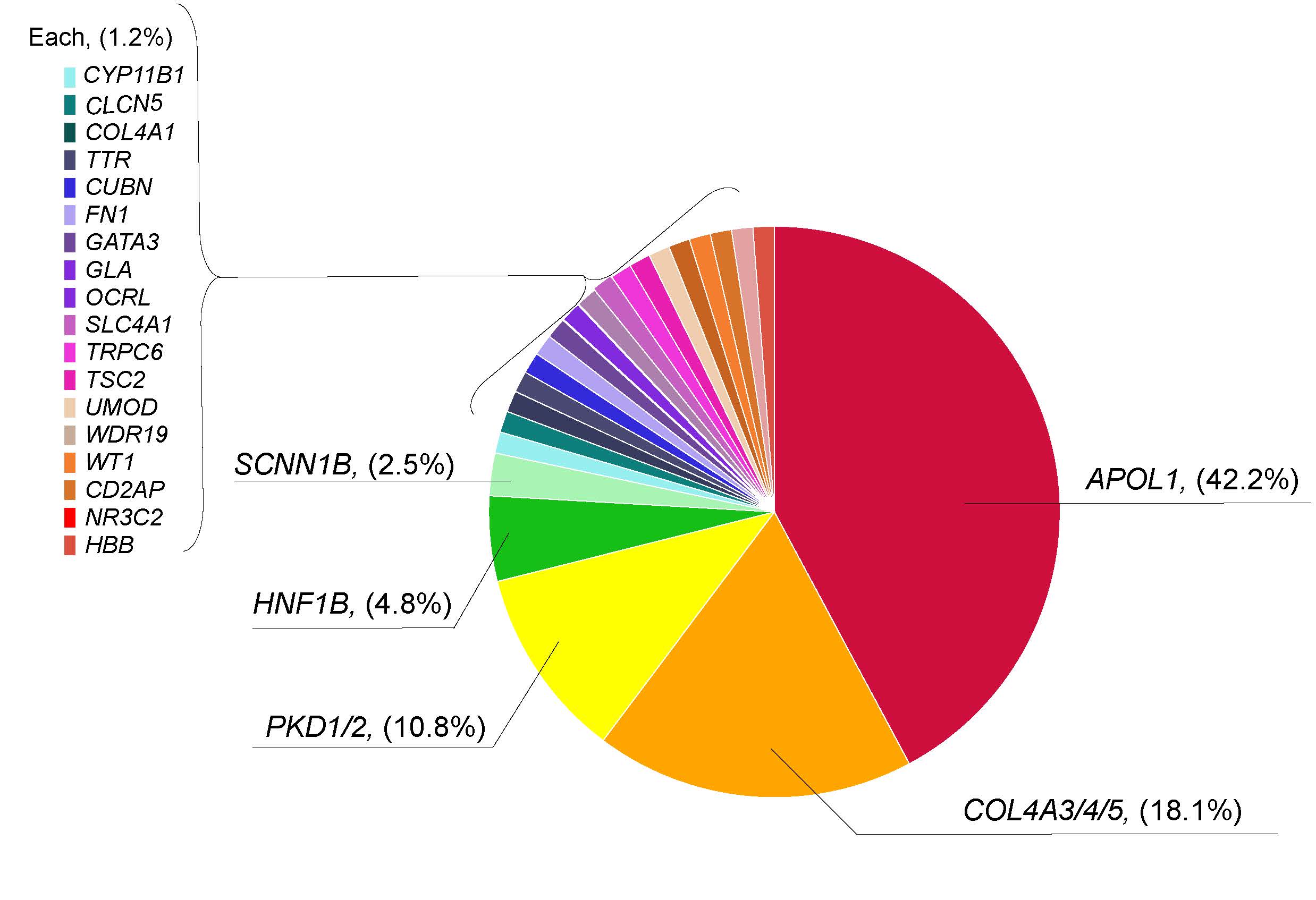Nephrology: CKD
Nephrology 6: Glomerular/Clinical and Basic Science
71 - Looking Beyond APOL1: Exploring Genetic Contributors to Kidney Disease in Children of African Ancestry by Broad-Panel Genetic Testing
Publication Number: 71.351
- KB
Katya Brossart, MS, LCGC (she/her/hers)
Senior Medical Science Liaison
Natera, Inc.
Deerfield, Illinois, United States 
Sara Jandeska, MD, MBA (she/her/hers)
Medical Director
Natera, Inc.
San Carlos, California, United States
Presenting Author(s)
Co-Author(s)
Background: It is established that biallelic inheritance of the G1/G2 risk alleles in APOL1, found almost exclusively in individuals of African ancestry, contributes to end-stage kidney disease (ESKD). However, in children of African ancestry with CKD, neither the monogenic disease burden nor the proportion attributable to APOL1 has been well established.
Objective: Here, we aimed to identify genes associated with monogenic kidney diseases and APOL1 high-risk genotype in children of African ancestry.
Design/Methods:
Genetic testing with a 385 kidney disease-associated gene panel (the Renasight™ test) in pediatric patients was performed between May 2020 and August 2021. Test results for children of reported African American ancestry (including those for whom more than one ancestry was reported) were analyzed to determine the prevalence of APOL1 high-risk genotypes and monogenic kidney diseases. Positive findings included a monoallelic pathogenic and likely pathogenic (P/LP) variant in an autosomal dominant or X-linked gene, biallelic P/LP variants in autosomal recessive genes and biallelic G1/G2 APOL1 risk alleles.
Results:
A total of 1009 pediatric patients (median age: 10.9 years, range 0-18 years) were tested. Among those for whom ancestry was reported, 24.8% (174/701) were of African ancestry. The prevalence of positive results (i.e., for monogenic disease and/or the APOL1 high-risk genotype) was 40% (n=70, 70/174) in patients of African ancestry, compared to 33% (n=330, 330/1009) in the full cohort. The prevalence of the high-risk APOL1 genotypes was 20% (n=35, 35/174) in the African ancestry cohort, compared to 5% (n=51, 51/1009) in the full cohort. Aside from APOL1, the positive findings reported in the patients of African ancestry included 25 genes associated with monogenic kidney disease, the most common of which were PKD1/2, COL4A3/4, and HNF1B (Figure 1). These findings constituted 37% of the total genetic diagnoses in this group; 17% had a dual- or triple-positive result, most involving APOL1 (10/12) (Figure 2).
Conclusion(s):
Pediatric patients of African ancestry had positive findings spanning 25 genes associated with monogenic kidney diseases in addition to the APOL1 high-risk genotype. Among monogenic etiologies identified in this cohort, ciliopathies and glomerulopathies were most prevalent. One third of pediatric patients of African ancestry tested had a high-risk APOL1 genotype, and positive findings in more than one gene were not uncommon. Further study of pediatric genetic diagnosis may provide insight into the phenotypic variability, disease course, and optimal approach to clinical management.

.jpg)
